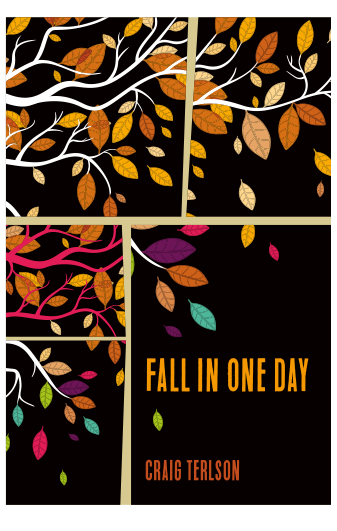| ________________
CM . . .
. Volume XXIII Number 31. . . April 21, 2017
excerpt:
Joe Beck’s world is turned upside down when his friend Brian goes missing. Thinking that the police and other adults don’t seem to be doing much to solve the mystery, Joe enlists the help of his brother Karl and their stoner friend Dennis to follow the clues, figure out what’s going on and bring Brian home safely. They understand this may uncover some long-hidden secrets, but it has to be done if Brian is to be rescued. Craig Terlson captures the feelings and reactions of 15-year-old Joe very well. At times, Joe is decisive and adult, making and executing plans in order to find his friend. Yet he also doubts his own abilities, afraid that he will look or act childish. This is a coming-of-age story in which the main character eventually learns more about himself and the world around him, despite failures, setbacks and his own worry and occasional hesitation. The author sets his story in 1973 which is key to the themes of the book. Joe hears about Watergate on the television, without really understanding the details. His overall impression is that, if the President of the United States can lie and cover up his actions, then no adult can truly be trusted. This is re-enforced when Joe discovers that Brian’s father is responsible for his own son’s disappearance. The theme of trust is further illustrated by the Newtons, secondary characters who add interest and humour to the novel. The Newton twins regularly attend church and constantly admonish Joe, telling him he is surely headed to hell. This adds to Joe’s bewilderment and his indecision about just who and what he can believe. 1973 saw a changing world. Not only was it the era of Watergate, but also the role of women was beginning to change, and this is suggested in the character of Joe’s mother. It was also the time of drug culture. Only a few years earlier, LSD had been tried as a therapy to cure mental health disorders. Joe knows that The Mental is a hospital in town which cares for mentally ill patients, and he comes to understand that Brian’s father has both mental and emotional problems. Once again, it ends up as a trust issue. Can patients trust their physicians and therapies? Can anyone trust Brian’s father after what he has been through? In fact, can any children truly trust their parents? These questions of trust and who is or isn’t telling the truth are fundamental to the story. However, the tale is not all philosophy and questions of truth. When Brian disappears, Joe becomes an amateur detective, determined to find his friend. There are brief phone calls from Brian, indicating where he thinks he and his father are travelling. This leads to road trips for Joe, Karl and Dennis and finding mysterious papers with coded messages as well as the father’s diary which perhaps contains only the wanderings of a disturbed mind or might hold the clues necessary to understanding the man’s thinking and, therefore, his intentions and future actions. Young adult readers who enjoy the mystery/thriller genre will find the novel exciting and entertaining. Set in an era before laptops and cellphones, Joe uses a tape recorder to capture events and his own reactions to them. The act of recording helps Joe sort through various ideas and strategies and organize his thoughts. From the author’s point of view, this is an interesting technique to provide a backstory, to further the plot and to help readers understand the main character. Mystery, conspiracy, overcoming apparently insurmountable obstacles, a cast of believable and likeable characters, and a good dash of humour – all in a Canadian setting – these are the ingredients of Fall in One Day, and the result is a book which engages its readers on many levels and is a most satisfying read. Highly Recommended. Ann Ketcheson, a retired high school teacher-librarian and teacher of English and French, lives in Ottawa, ON.
To comment
on this title or this review, send mail to cm@umanitoba.ca.
Copyright © the Manitoba Library Association. Reproduction for personal
use is permitted only if this copyright notice is maintained. Any
other reproduction is prohibited without permission.
Next Review | Table of Contents For This Issue -April 21, 2017 |
